Higher classification Latimeria | Family Latimeriidae Scientific name Latimeria chalumnae | |
 | ||
Similar Latimeria, coelacanth, Indonesian coelacanth, Sarcopterygii, Bony fishes | ||
5 bizarre facts about the coelacanth what the stuff
The West Indian Ocean coelacanth (Latimeria chalumnae), sometimes known as the African coelacanth is one of two extant species of coelacanth, a rare order of vertebrates more closely related to lungfish, reptiles and mammals than to the common ray-finned fishes. It has a vivid blue pigment, and is the better known of the two extant species. The species has been assessed as critically endangered on the IUCN Red List.
Contents
- 5 bizarre facts about the coelacanth what the stuff
- West indian ocean coelacanth
- Biological characteristics
- Population and conservation
- First find in South Africa
- The second specimen Malania anjouanae
- Genetics
- References
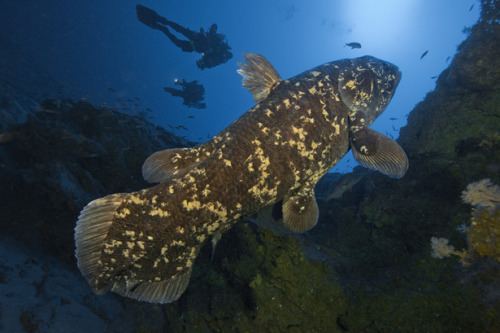
West indian ocean coelacanth
Biological characteristics

The average weight of Latimeria chalumnae is 80 kg (176 lb), and they can reach up to 2 m (6.5 ft) in length. Adult females are slightly larger than males. L. chalumnae is widely but very sparsely distributed around the rim of the western Indian Ocean, from South Africa northward along the east African coast to Kenya, the Comoros and Madagascar, seemingly occurring in small colonies.
Population and conservation
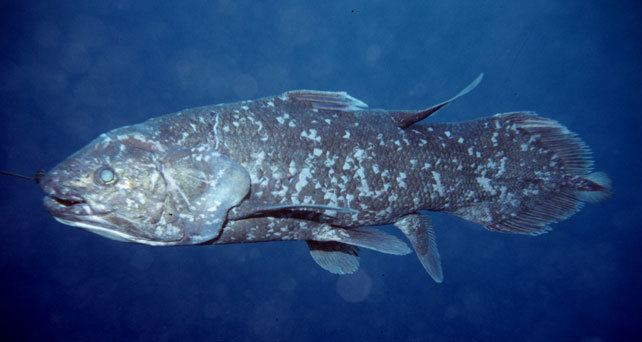
L. chalumnae is listed as critically endangered by IUCN. In accordance with the Convention on International Trade of Endangered Species treaty, the coelacanth was added to Appendix I (threatened with extinction) in 1989. The treaty forbids international trade for commercial purposes and regulates all trade, including sending specimens to museums, through a system of permits. In 1998, the total population of the West Indian Ocean coelacanth was estimated to have been 500 or fewer, a number that would threaten the survival of the species.
First find in South Africa
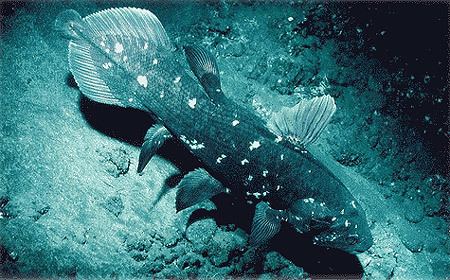
On December 23, 1938, Hendrik Goosen, the captain of the trawler Nerine, returned to the harbour at East London, South Africa, after a trawl between the Chalumna and Ncera Rivers. As he frequently did, he telephoned his friend, Marjorie Courtenay-Latimer, curator at East London'S small museum, to see if she wanted to look over the contents of the catch for anything interesting, and told her of the strange fish he had set aside for her. Correspondence in the archives of the South African Institute for Aquatic Biodiversity (SAIAB, formerly the JLB Smith Institute of Ichthyology) show that Goosen went to great lengths to avoid any damage to this fish and ordered his crew to set it aside for the East London Museum. Goosen later told how the fish was steely blue when first seen but by the time the Nerine entered East London harbour many hours later the fish had become dark grey.
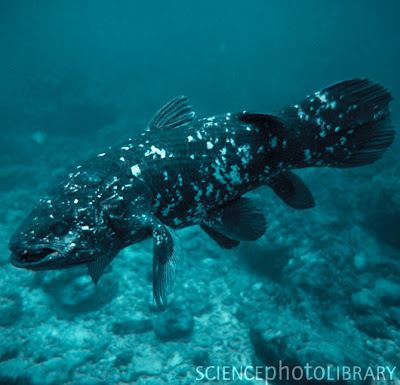
Failing to find a description of the creature in any of her books, she attempted to contact her friend, Professor James Leonard Brierley Smith, but he was away for Christmas. Unable to preserve the fish, she reluctantly sent it to a taxidermist. When Smith returned, he immediately recognized it as a coelacanth, known only from fossils. Smith named the fish Latimeria chalumnae in honor of Marjorie Courtenay-Latimer and the waters in which it was found. The two discoverers received immediate recognition, and the fish became known as a "living fossil". The 1938 coelacanth is still on display in the East London, South Africa, museum.
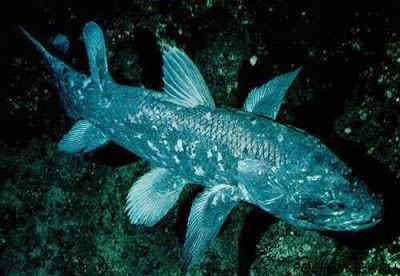
However, as the specimen had been stuffed, the gills and skeleton were not available for examination, and some doubt therefore remained as to whether it was truly the same species. Smith began a hunt for a second specimen that would take more than a decade.
The second specimen, Malania anjouanae
A second specimen with a missing dorsal fin and deformed tail fin was captured in 1952 off the coast of Anjouan. At the time it was believed to be a new species and placed in a new genus as well, Malania, named in honour of the Prime Minister of South Africa at the time, Daniel François Malan, without whose help the specimen would not have been preserved with its muscles and internal organs more or less intact.
Genetics
The genome of Latimeria chalumnae was sequenced in 2013 to provide insight into tetrapod evolution. The full sequence and annotation of the entry is available on the Ensembl genome browser.
